- Advertised capacity: 512GB
- Logical capacity: 536,871,960,576 bytes
- Fake/skimpy flash: Fake flash
- Speed class markings: Class 10, U3
| Sample # | 1 | 2 | 3 | Average |
|---|---|---|---|---|
| Obtained from | AliExpress | AliExpress | AliExpress | N/A |
| Price paid | $12.17 | $14.01 | $14.01 | $13.40 |
| Physical capacity | 31,434,108,416 bytes | 31,058,935,296 bytes | 31,058,935,296 bytes | 31,183,993,003 bytes |
| Protected area | 0 bytes | 134,217,728 bytes (inaccessible) | 134,217,728 bytes (inaccessible) | N/A |
| Manufacturer ID | 0x00 | 0x56 | 0x56 | N/A |
| OEM ID | 0x0000 | 0x5344 (ASCII: SD) | 0x5344 (ASCII: SD) | N/A |
| Product name | 0x4150505344 (ASCII: APPSD) | 0x4150505344 (ASCII: APPSD) | 0x4150505344 (ASCII: APPSD) | N/A |
| Product revision | 0x00 | 0x00 | 0x00 | N/A |
| Manufacture date | Sep 2021 | Jul 2016 | Jul 2016 | N/A |
| Serial number | 0x12800000 | 0x0000088b | 0x0000074b | N/A |
| Sequential read speed (MB/sec) | 12.48 | 41.90 | 41.83 | 32.07 |
| Sequential write speed (MB/sec) | 9.55 | 24.35 | 24.36 | 19.42 |
| Random read speed (IOPS/sec) | 472.40 | 476.32 | 468.19 | 472.30 |
| Random write speed (IOPS/sec) | 3.65 | 311.76 | 310.11 | 208.51 |
| Read/write cycles to first error | 447 | 652 | 652 | 584 |
| Read/write cycles to complete failure | 1,687 | 652 | 652 | 996 |
| Total days to complete failure | 101 | 31 | 31 | 54 |
| Card reader used | Lexar LRWM05U-7000 | JJS CR-UTC4AC | JJS CR-UTC4AC | N/A |
| Package front | 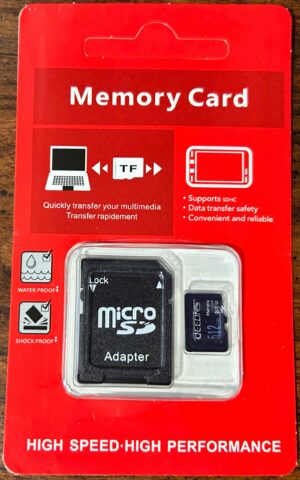 | 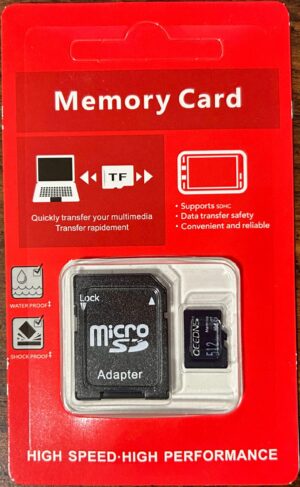 | 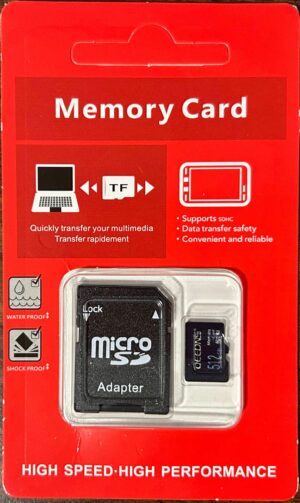 | N/A |
| Package back | 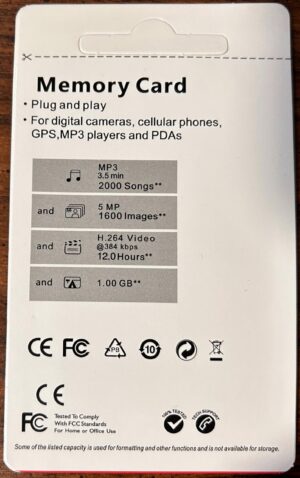 | 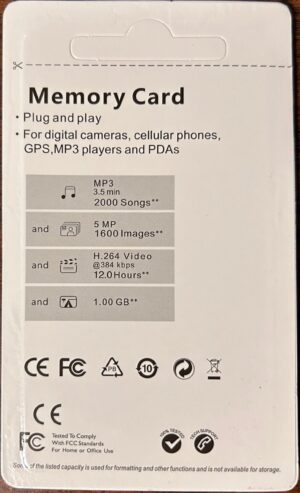 | 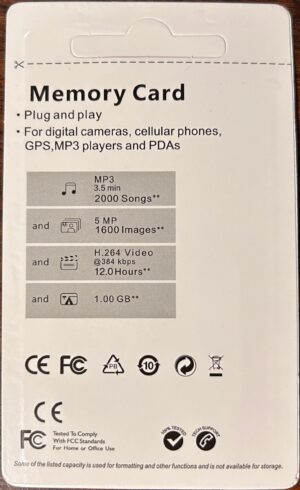 | N/A |
| Card front | 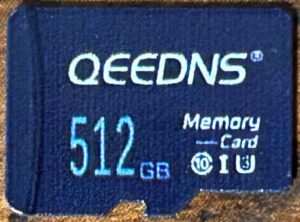 | 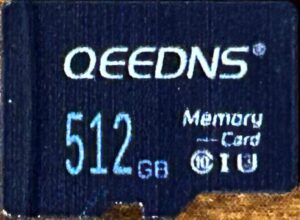 | 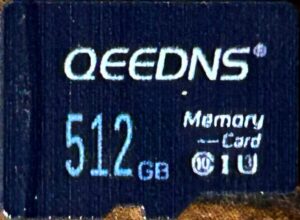 | N/A |
| Card back | 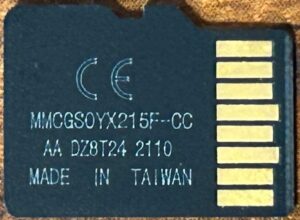 | 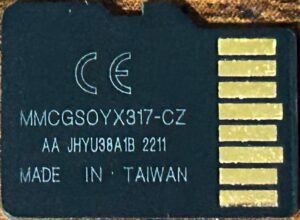 | 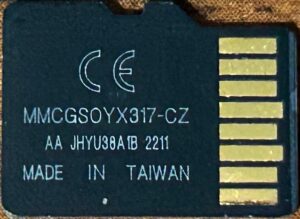 | N/A |
Discussion
This is another card that I bought because I wanted to see if I could find genuine and fake flash in the same brand. And, it turns out that the answer is “Yes. Yes you can.”
Samples #2 and #3 were obtained separately from sample #1, and there appear to be some differences between them. For example, sample #1 had its manufacturer ID and OEM ID set to all zeroes — which, to me, screams of an attempt by the manufacturer to hide their true identity — while samples #2 and #3 had their manufacturer ID set to 0x56 and their OEM ID set to SD. (No idea who manufacturer ID 0x56 is assigned to.)
There was also a marked difference in performance between the two sets: sample #1 performed more than one standard deviation below average in all performance metrics, with its scores putting it somewhere between the 3rd and 10th percentiles. Samples #2 and #3 fared better, but still scored below average — their scores put them somewhere between the 6th and 46th percentiles. Sample #1 just barely missed the 10MB/sec sequential write speeds that would have been needed to qualify for the Class 10 marking. Samples #2 and #3, however, easily met that threshold. None of the three met the 30MB/sec sequential write speeds that would have been needed to qualify for the U3 mark.
Sample #1 started having issues during round 448; however, its issues started ramping up around round 1,534. It hobbled along for quite a while afterwards — every so often (usually a few times a day towards the end), it would disconnect itself from the reader, and I would have to manually pull it and re-insert it into the reader to get it working again. It finally bit the dust during round 1,686 — it disconnected itself from the reader, and re-inserting it would no longer solve the problem.
Here’s what this sample’s progression looked like:
Why did the number of bad sectors drop after round 1,647? Because it was experiencing enough errors to the point where my program could no longer automatically detect the device after I plugged it back in, so I had to restart the test from scratch. Afterwards, I added an option to the program to force it to resume from a given device.
Samples #2 and #3, curiously, both failed just two hours apart from each other, and at the same number of read/write cycles (although this part is probably more due to the fact that I started them testing at about the same time). They both simply stopped responding to commands. They had not experienced any errors prior to this. However, when neither one would respond to commands when plugged into my Realtek reader, I decided to declare them dead.
June 15, 2024

